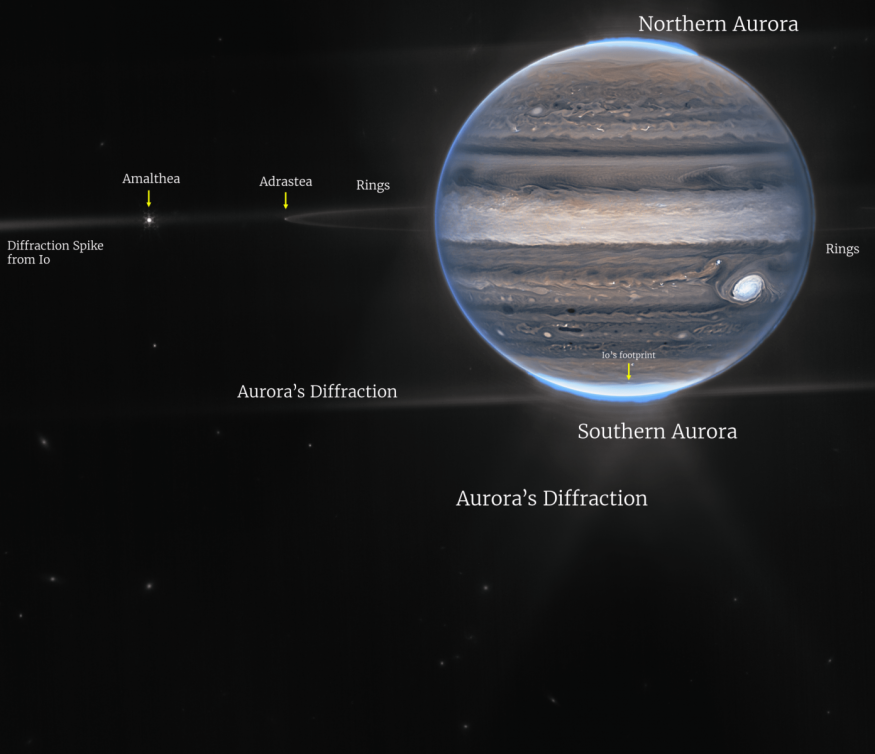After catching breathtaking occurrences from the edge of time, NASA's James Webb Telescope is now focusing on objects closer to Earth. The most powerful spacecraft ever has caught Jupiter in a way that has never been seen before. The observatory's most recent report has transmitted information on the planet's massive storms, strong winds, auroras, and severe temperature and pressure extremes.
The James Webb Telescope's newly acquired photographs of the solar system's largest planet reveal new insights into Jupiter's inner life. The image with new features shows a storm that has been raging on the globe for years and is becoming bigger.
The observatory's Near-Infrared Camera (NIRCam), which has three specialized infrared filters that highlight the planet's features, was used to capture the photos that citizen scientist Judy Schmidt analyzed.
Ars Technica mentioned that the powerful space telescope can reveal newly unobserved characteristics of Jupiter by viewing it at these wavelengths outside visible light.

NASA James Webb Space Telescope Checks Out Jupiter Rings
The auroras at both poles are particularly striking in one of the images brought on by Jupiter's strong magnetic field. Because infrared light is undetectable to the human eye, it has been mapped onto the visible spectrum, giving these pictures artificial hues. Because they emit ionized hydrogen, auroras glow in a filter mapped to redder hues.
Even if it looks white rather than crimson in the new photographs, Jupiter's "Great Red Spot" is still noticeable. This white hue denotes reflectance from cloud tops at great altitudes.
The Jovian system is seen in greater detail in a second shot, giving perspective on the planet's narrow rings, two of its tiny moons, and the size of its auroras. Since the rings are a million times fainter than the planet, they are extremely challenging to see from a distance. In the backdrop, distant galaxies are also noticeable.

Imke de Pater, an emeritus professor at the University of California, Berkeley, and Thierry Fouchet, a professor at the Paris Observatory, oversaw Webb's scientific studies of the planet.
"We hadn't really expected it to be this good, to be honest," said de Pater in a statement.
"It's really remarkable that we can see details on Jupiter together with its rings, tiny satellites, and even galaxies in one image," added de Pater.
NASA Explains Why JWST Takes Time To Release Photos
NASA explained that information from observatories like James Webb Space Telescope doesn't come in a tidy bundle to Earth.
Instead, it includes details regarding the intensity of the light detected by Webb's detectors.
The Space Telescope Science Institute (STScI), Webb's mission and science operations center, receives this data as raw data. The data is calibrated by STScI and sent to the Mikulski Archive for Space Telescopes for distribution after being processed.
Scientists interpret that data into pictures like those above. While staff at STScI formally prepares Webb photographs for publication, citizen scientists or amateur astronomers frequently go through the public data library to retrieve and process images as well.
RELATED ARTICLE : NASA Released New Video of Engineers Putting Together the Europa Clipper That Will Be Launched to Jupiter in 2024
Check out more news and information on Space in Science Times.
© 2025 ScienceTimes.com All rights reserved. Do not reproduce without permission. The window to the world of Science Times.












